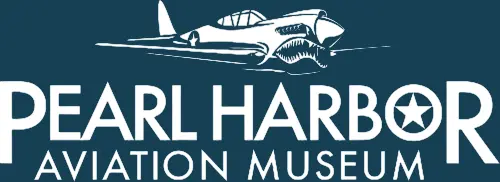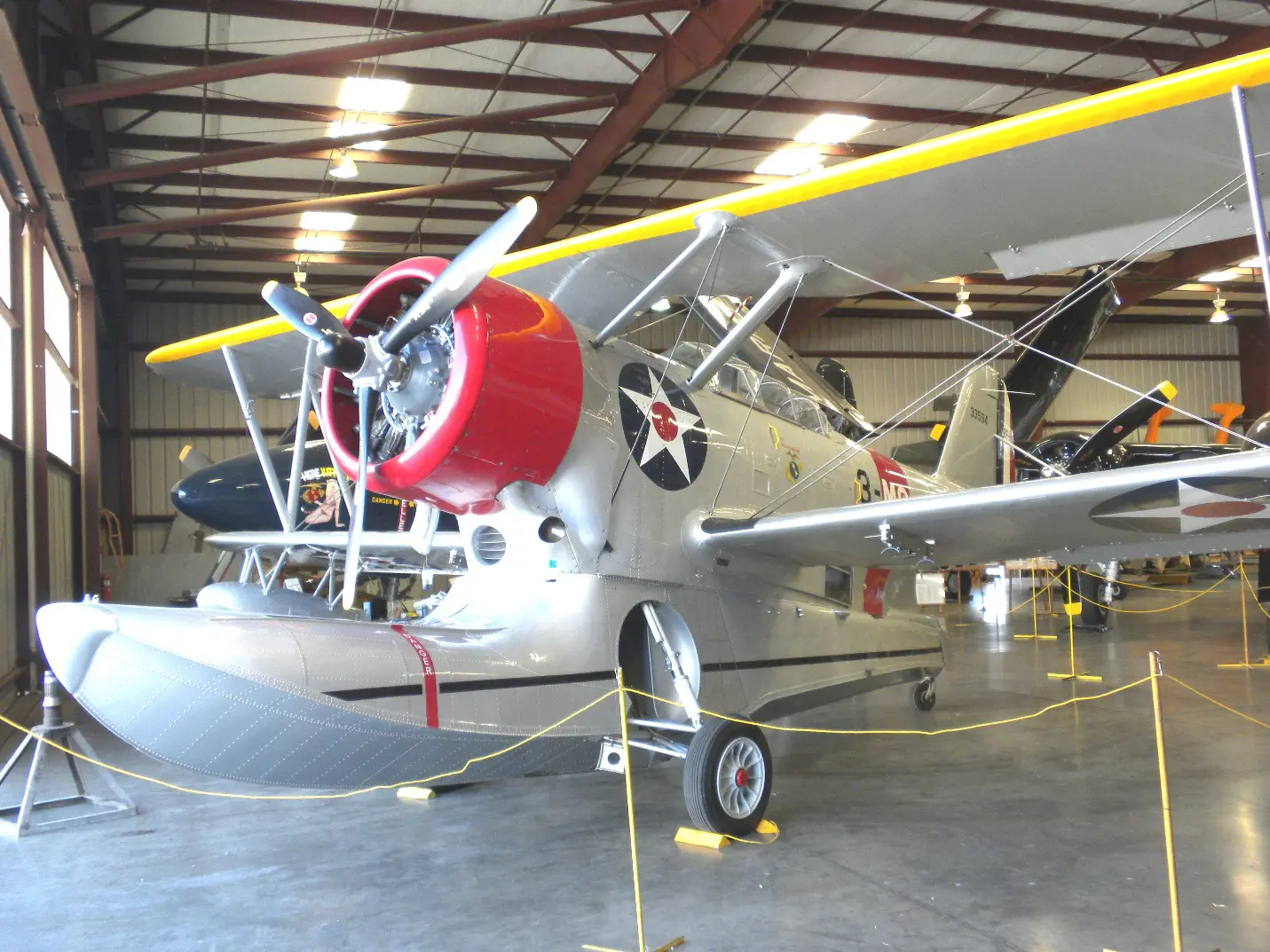Posted on September 20, 2010

OS2U Kingfisher Floatplane
Missions
In World War II, aircraft carriers were not the only ships to launch and recover aircraft. Cruisers and battleships each carried a few small floatplanes. Most were Curtis SOC Seagulls or Vought OS2U Kingfishers. Curtis SO3C Seamews and SC Seahawks also saw some use in the war.
Battleships usually carried four. They used them primarily for observation—watching the fall of shells during surface actions to help direct gunfire.[ii] This gave most of these aircraft an “O” in their official designations. Observation was critical in World War II, especially in the early years before radar was perfected because battleships often had to fire on targets far beyond visual range.
The “S” in their designations meant “scouting.” Cruisers used their floatplanes primarily to locate enemy surface ships and submarines. Battleship and cruiser flotillas often had to sail without aircraft carriers. When they did, cruiser floatplanes were their only eyes. Cruisers often gave up some of their deck space to a seaplane hanger, allowing them to carry up to eight floatplanes.

Cruiser Hanger with Stripped-Down SOC Seagull (USN)
Floatplanes had many other missions during the war. An increasingly important role was finding and recovering pilots downed at sea. A single rescued pilot could be carried inside the aircraft.
Figure 3 shows an aircraft being prepared to be lifted back onto its ship. The pilot and observer/gunner are fixing a hook to the floatplane. The rescued pilot is sitting the back seat.

Rescued Pilot in Back Seat of an OS2U Kingfisher
If several fliers had to be rescued, however, they hung on outside. This was not a problem because the floatplane would not be able to take off anyway. The aircraft had to taxi over miles of open ocean to get back to its ship.[iii]

Rescued Crew being Taxied Back to Ship HH 80-G-227991
Often the ship’s captain or an admiral aboard the ship had his own floatplane to use as a “hack” to get to and from the ship. These were often painted a different color.

Admiral Being Delivered by an SOC Seagull
Seagulls, Kingfishers, Seamews, and Seahawks
There were four ship-launched observation/scouting floatplanes during the war. The Curtis SOC Seagull and the Vought OS2U were in action from the first day of the war. The disastrous Curtis S03C Seamew appeared in 1942 but was gone a year later. At the very end of the war, the much faster Curtis SC Seahawk became available for scouting.
The Curtis SOC Seagull
The Curtis SOC Seagull was a biplane that joined the fleet in 1935. This is amazing because almost no aircraft that entered service this early was still around by the start of the war, much less throughout the war. “SOC” meant that it was a scout/observation (SO) aircraft produced by Curtis-Wright (C).

Curtis SOC Seagull
The pilot and back-seat observer/radio operator/gunner sat in open cockpits. The Seagull was a biplane with folding outer wings to facilitate storage in on-cruiser hangers.

Curtis SOC Seagull with Folded Sea-Side Wings
Its Pratt & Whitney R-1340 single-row 600 hp engine and big float limited its top speed to 165 mph.[ii] It had a range of 878 miles,[iii] which was fine for observation and acceptable for scouting. Only 315 were built,[iv] and production ceased in 1938.[v] On cruisers, the Seagull was scheduled to be replaced by another Curtis aircraft, the SO3C. Consequently, SOCs were relegated to secondary uses. However, the SO3C did not fly well and was quickly scrapped. Old SOCs were brought back to front-line status and were nursed along on cruisers through most of the war.[vi]
The Curtis SO3C Seamew
By 1938, the Navy began planning a replacement for the SOC. Curtis won this contract with its XSO3C prototype. This was a monoplane with wings that folded straight back for efficient storage. Although the Seamew would not have had much better performance than the Seagull, the SO3C was eagerly anticipated because the Navy’s few SOCs were already quite old.
Unfortunately, the SO3C was required to use the Ranger V-770 water-cooled V-12 engine that could produce 600 hp on takeoff and 400 hp at 9,000 feet.[vii] This proved to be a very bad choice because the engine had terrible overheating problems at low speeds.[viii]
Even worse, the aircraft had very serious handling problems. Raising its wingtips like the winglets on modern airliner helped, but only somewhat.[ix] Although the vertical tail area was increased, part of it had to be displaced when the rear-seat observer opened the canopy to see well.[x] Although the Navy began equipping its cruisers with the Seamew in mid 1942, it retired retired them by the end of 1943 and brought back the SOCs.[xi]

Curtis SO3C Seamew
The Vought OS2U Kingfisher
The OS2U Kingfisher was a more modern single-wing floatplane that joined the fleet in 1940. Its OS2U designation indicated that it was an observation/scouting aircraft—the second (2) observer/scout produced by Vought (U). You might think that as a monoplane, it would have been faster than the biplane Seagull, but the Kingfisher had an even less powerful Pratt & Whitney R-985 Wasp Junior engine with only 450 hp.[ii] This was a conscious design choice.[iii] It allowed the Kingfisher to be small yet still be a monoplane without folding wings. However, it only gave the Kingfisher marginally better performance than the Seagull—a maximum speed of 170 mph[iv] and a range of 1,485 miles.[v] Although the Kingfisher was not very superior to the Seagull, it was produced when the Navy was gearing up for war, so Vought built a large number of them. Before production ended in 1942, 1,519 Kingfishers were produced by Vought and the Naval Aircraft Factory.[vi] This was small by fighter and bomber production volumes, but the OS2U was the most widely produced floatplane in World War II.[vii]

Vought OS2U Kingfisher
The Kingfisher had non-folding wings. This lightened its weight. It also meant that it could not be stored efficiently in cruiser hangers. This was not a problem, because the Kingfisher was designed for use on battleships, which lacked hangers and simply parked their observation/scout planes on the launch rails when not used. Because the Kingfisher was designed to operate from battleships, observation was its primary role, so it was given the designation OS instead of SO.
Although the OS2U did not have stellar performance, it was a sophisticated aircraft. Its elevators could droop and act as flaps during landing.[ii] This gave an extremely low landing speed. Of course this also meant that the elevator could not be used for roll control, but spoilers on the wing provided very effective control during landings.[iii]
The figures we have cited so far for the Seagull and Kingfisher were “official” speed and distance figures, but they were for aircraft that were highly optimized. For real aircraft in combat, performance is always lower. Fortunately, we do have realistic data for the OS2U at war.
Table 1 shows data from the U.S. Department of the Navy’s field guide on characteristics and performance for the OS2U-3, which was a developed version of the Kingfisher.[iv] The OS2U did not really change much over its life, so these figures are probably reflective of earlier versions of the Kingfisher. The figures in the table are designed to apply to operational aircraft in the fleet with protected fuel tanks, full armor, and full armament.
Table 1: Bureau of Aeronautics Characteristics and Performance for the OS2U-3
| Scouting 1 | Scouting 2 | Antisubmarine Patrol | |
| Weight (pounds) | 5,600 lb | 6,000 lb | 6000 lb |
| Fuel (gallons) | 141 gallons | 207 gal | 150 gallons |
| Maximum speed, sea level | 157 mph | 155 mph | 148 mph |
| Maximum speed, 5500 feet. | 164 mph | 163 mph | 158 mph |
| Maximum range | 805 miles | 1155 miles | 760 miles |
| Mission radius | 200 mile | 300 miles | 185 miles |
The table gives figures for three different missions. Scouting 1 figures are for a scouting mission with a combat patrol radius of 200 miles. Scouting 2 is for a patrol radius of 300 miles. These distances are far below the radius you would get by cutting the maximum range in half. Combat radiuses permit circuitous routes and give good margins of safety. The antisubmarine mission data reflects the carriage of two 325 pound depth bombs. Speeds at both sea level and at the aircraft’s critical altitude of 5,500 feet (the altitude at with its speed in the highest) are well below the 170 mph widely quoted figure.
Also in the Bureau’s report gave information about the engine.[v] The P&W R-985-AN-2 or R-985-AN-8 engine used in the OS2U-3 had normal engine power of 400 hp at 2,200 RPM. It could maintain this power up to 5,500 feet. The 450 hp figure often cited was take-off power only, which could only be used briefly.
The Curtis SOC Seahawk
Both the Seagull and the Kingfisher were two-seat aircraft. Late in the war, the Navy adopted a different scouting approach for cruisers with its last major ship-launched floatplane, the Curtis SC Seahawk. Taking its cue from the Nakajima A6M2-N “Rufe,” which was a Zero with a float, the Seahawk was a single-seat aircraft with two forward-firing 50 caliber machine guns. Its 1,300 hp R-1230 engine gave it a maximum speed of 313 mph at 28,600 feet.[vi] Even at sea level, it could reach 238 mph.[vii] Its high speed at altitude was due to the engine’s turbocharger.[viii] The Seahawk had a good range of 1,090 miles.[ix] As its designation indicates, the SC was a pure scouting plane. (Radar had eliminated the need for observation aircraft.) Designed to operate from cruisers, it finally allowed the Navy to retire its few and overworked SOC Seagulls.[x]
The Seahawk, however, had little impact on World War II. It did not go into combat until June, 1945, two months before at the end of the war. The Seahawk served until 1949, when the Navy stopped carrying scout/observation aircraft on cruisers and battleships.[xi] By then, radar had finally eliminated the need for scouting as well. The final production count for Seahawks was 562.[xii]

Curtis SC Seahawk
What’s in a Name
The U.S. Navy only began giving “popular” names to its aircraft in 1941. So the Curtis SOC was just the “SOC” until 1941. The Kingfisher in turn, was simply the OS2U during its first year of service. Seamew? It’s a type of seagull.
Combat
Given their low speeds, ship-launched floatplanes were not very survivable against enemy aircraft. The pilot had a single fixed forward-firing 30 caliber machine gun but had limited maneuverability to aim the aircraft. The back-seater had a single 30 caliber machine gun. These guns each had 500 to 600 rounds of ammunition. This was modest armament to say the least. However, during big-gun battles, observation aircraft had to be launched to direct gunfire whatever the risks.
Occasionally, however, these machine guns proved effective. During the attack on Pearl Harbor, two SOC Seagulls from the cruiser Northampton came up a damaged Zero heading back to its carrier. In a 20-minute running gun battle, they managed it down. During the invasion of Iwo Jima, an OS2U Kingfisher was scouting from the cruiser Pensacola. Suddenly, it was attacked by a Zero. The Kingfisher actually outmaneuvered the Zeke and shot it down. In most cases, however, floatplanes came out second best in gun battles.
Under-wing bomb racks allowed them to carry a pair of 100 or 250 pound bombs. These were not devastating, but they could do some damage. In one case, they were even effective when they failed to explode. During the invasion of Sicily, an SOC on scouting duty observed Italian troops heading toward the landing zone. The Seagull dropped its two 100 pound bombs on the troops. Although neither bomb worked, the attack terrified the troops. When the aircraft began strafing the troops, the soldiers surrendered to the Seagull. The pilot motioned the disarmed troops toward the beach, firing the machine guns behind them to move them along.[ii]
More importantly, scouts could carry a pair of 325 pound depth bombs that could crack open submarines. This made them very dangerous on submarine patrols. Figure 11 shows a depth bombs being removed from an SOC on the cruiser Philadelphia during the first year of the war.

325 Pound Depth Bomb
Overall, scout/observation aircraft operated like the cavalry on land. Their job was to find and observe, getting into combat only when necessary.
Launching and Recovery
To send a floatplane out, the ship’s crane loaded it on a launch rail. The crew then swung the launch rail so that the floatplane would be launched into the wind regardless of the ship’s direction. The rails were short, but a catapult got the floatplane into the air before it reached the end of the rail. The launch was so violent that it was often called a “bang.”

Catapult Launch Rail

Rear View of a Catapult Launch
To get back aboard the ship, the floatplane landed in the water behind to the ship to take advantage of the relatively flat water in the wake. The floatplane then taxied alongside the ship. The ship lowered a canvas recovery sled with mesh netting on top. The seaplane taxied onto the sled, and a hook on the seaplane’s bow caught on the mesh.[ii] The seaplane then killed its engine and was pulled along at the speed of the ship.

SC on the Recovery Sled

Sailor on Far Right Has Hand on Float Hook
Now came the hard part. The ship lowered a large hook down to the floatplane. The rear-seater climbed out of his seat and secured the hook to the aircraft.

Floatplane Recovery
The ship then winched the seaplane back on deck by a crane. On Battleships, the aircraft was typically placed on a launch rail for “storage.” Often, two floatplanes would be stored on a single rail. For launches, the crane would remove one of them.

Floatplane Storage on Catapult
When battleships and cruisers were in port, their seaplanes normally flew off to shore facilities for maintenance. In most cases, “beaching gear” was added to their floats. Basically, these added wheels to the floats, allowing the seaplane to taxi onto shore or at least to be towed on the shore. In some cases, their floats were removed entirely and replaced with fixed wheeled gear.

Beaching Gear on an SOC Seagull
At Pearl Harbor
During the attack on Pearl Harbor, photos indicated the presence of several SOC Seagulls and Kingfishers on the island. Kingfisher floatplanes—usually destroyed beyond use—were also seen in photographs of damaged battleships. The pictures on Ford Island show them all being near the seaplane ramp at the end of the island.

Kingfisher at Pearl Harbor during the Attack

SOC Seagulls at Pearl Harbor during the Attack
The Situation Today
Large surface ships no longer carry catapult-launched and sea-recovered floatplanes. However, today’s cruisers and destroyers do carry helicopters that provide search and rescue, scouting, anti-submarine warfare, general transport, and many other services traditionally provided by catapult-operated floatplanes. Thanks to vertical lift, there are no more large catapults to take up deck space, and there are no dangerous water recoveries. Many modern ships, however, do continue to have hangers for their helicopters. In a real sense, the big-ship floatplane of World War II has not disappeared. It has merely evolved to use new technology.

Ship-Based Helicopter
Photo Credits
| Figure 1 | OS2U Kingfisher Floatplane | [email protected], 2010. Taken at the Smithsonian National Air and Space Museum Steven F. Udvar-Hazy Center. |
| Figure 2 | Cruiser Hanger with Stripped-Down Seagull | United States Navy |
| Figure 3 | Rescued Pilot in Back Seat of an OS2U Kingfisher | Naval History and Heritage Command, Photograph 80-G-283564. |
| Figure 4 | Rescued Crew being Taxied Back to Ship | Naval History and Heritage Command, Photograph 80-G-222799. |
| Figure 5 | Admiral Being Delivered by an SOC Seagull | Naval History and Heritage Command, Photograph 80-G-457421. |
| Figure 6 | Curtis SOC Seagull | Naval History and Heritage Command, Photograph 80-G-5885. |
| Figure 7 | Curtis SOC Seagull with Folded Sea-Side Wings | U.S. National Archives, Photograph 19-N-29299. |
| Figure 8 | Curtis SO3C Seamew | Naval History and Heritage Command, Photograph 80-G-K-2836. |
| Figure 9 | Vought OS2U Kingfisher | [email protected], 2010. Taken at the Smithsonian National Air and Space Museum Steven F. Udvar-Hazy Center. |
| Figure 10 | Curtis SC Seahawk | Commander, Navy Installations Command, Naval Air Station Jacksonville. |
| Figure 11 | 325 Pound Depth Bomb | Naval History and Heritage Command, Photograph 80-G-16003-B. |
| Figure 12 | Catapult Launch Rail | Naval History and Heritage Command, Photograph NH 97592. |
| Figure 13 | Rear View of a Catapult Launch | U.S. National Archives, Photograph 80-G-K-4594. |
| Figure 14 | SOC on the Recovery Sled | U.S. National Archives, Photograph 80-G-K-3747. |
| Figure 15 | Sailor on Far Right Has Hand on Float Hook | Naval History and Heritage Command, Photograph 80-G-66114. |
| Figure 16 | Floatplane Recovery | Naval History and Heritage Command, Photograph 80-G-309140. |
| Figure 17 | Floatplane Storage on Catapult | Naval History and Heritage Command, Photograph 80-G-470115. |
| Figure 17 | Beaching Gear on an SOC Seagull | Naval History and Heritage Command, Photograph 80-G-NH 61228. |
| Figure 18 | OS2U Kingfisher at Pearl Harbor during the Attack | Naval History and Heritage Command, Photograph 80-G-19948. |
| Figure 19 | SOC Seagulls at Pearl Harbor during the Attack | Naval History and Heritage Command, Photograph 80-G-32492. |
| Figure 20 | Ship-Based Helicopter | U.S. Navy photograph 100527-N-3136P-353 (May 27, 2010). Taken by Mass Communication Specialist 2nd Class Jimmy C. Pan/Released |


